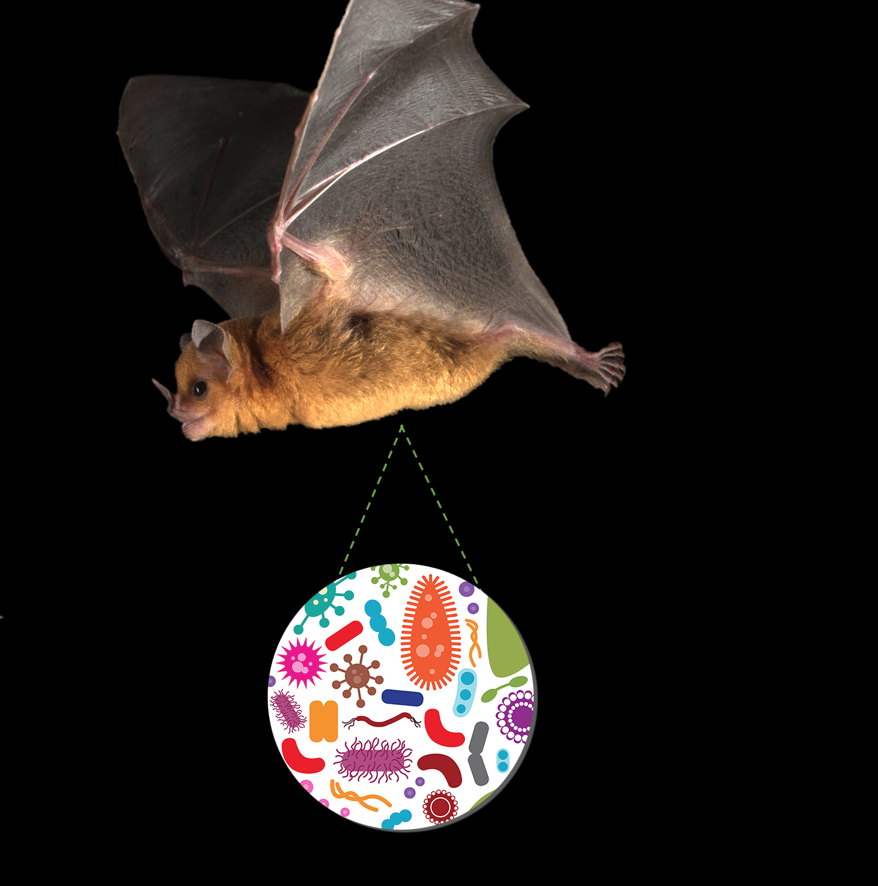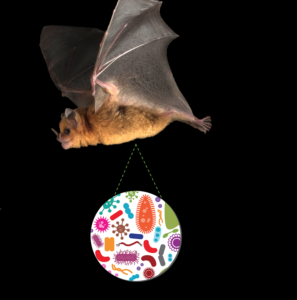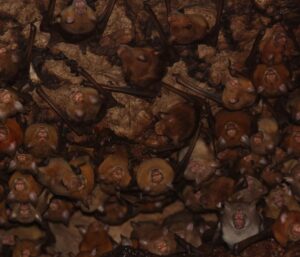Why are so many viruses being discovered in bats?
Contributed by: Melissa Ingala
In the age of COVID-19, the news abounds with reports of “new” viruses discovered in bats across the globe. Given all this new information, it’s reasonable to wonder why so many novel viruses are being discovered in bats, and how we should interpret these findings in the context of the current global health situation.
The first thing that isn’t immediately clear when we hear about these studies is that bats are not unique in having undiscovered viruses. That is to say, nearly all animals —including humans— are ecosystems in their own right, containing multitudes of viruses, bacteria, and protozoa that we call the “microbiome”. These host-associated microbes are still poorly described, meaning there is a huge chunk of global biodiversity that has gone unstudied! For example, a recent model predicted that there are probably about 40,000 species of viruses in mammals, and we have only described a small portion of them. That means that every time we sample a new host species for viruses, we can reasonably expect to find something new. Because microbiome surveys skew toward just a few evolutionary groups, we lack microbiome information for the majority of animals on Earth.
Sometimes missing from the headlines on newly discovered viruses is the fact that not all (or even most) of them are dangerous to humans. The same study that predicted 40,000 viruses in mammals also predicted that only about 25% of them have potential of crossing into humans. Even for the subset of viruses that might spill into humans, news headlines sometimes imply a much greater risk of this happening than there actually is. A recent study found novel coronaviruses (related to, but different from SARS-CoV-2) circulating in bats from Gabon. However, the study reported a lot of variation in viral presence among species and individuals, with fewer than 2% of the 1000 bats sampled testing positive for any coronaviruses at all. For a coronavirus to successfully cross into humans, that would mean a chain of events would have to unfold linking an infected bat with a susceptible human. When we consider the probability of all those events occurring in the right sequence, we can understand why these spillovers have historically been rare. Human activities, such as habitat destruction and wildlife trafficking, increase the likelihood of spillovers by bringing animals into unnatural contact and also into closer proximity to humans.
How do we know which viruses may be capable of infecting humans? The Gabon study and many others use evolutionary trees to map how closely related bat viruses are to those known from humans. If a human virus nests within the same “branch” as a bat virus, we infer that these two viruses must have shared a common ancestor. Often, these relationships are mistakenly interpreted as evidence for direct transmission from bats to humans, but in the case of coronaviruses, we know that most spillovers proceed through intermediate hosts—camels in the case of MERS, palm civets in the case of SARS, and a yet-unknown animal for COVID-19. It’s important to understand that evolutionary trees can only tell us about the animals and viruses we choose to include in the analysis. That is to say, it’s a mistake to assume that we know a virus jumped directly from bats to humans if we haven’t thoroughly sampled other animals that might have served as intermediate hosts. Until we have thoroughly sampled the viruses circulating in most animals —not just bats— our ability to understand complex viral transmission dynamics will remain limited.
So the next time you read a news article about there being so many novel viruses discovered in bats, don’t assume that all those viruses are dangerous to people! They are a part of the biodiversity of life on earth too, and the harder we look, the more viruses we will ultimately discover and describe.



